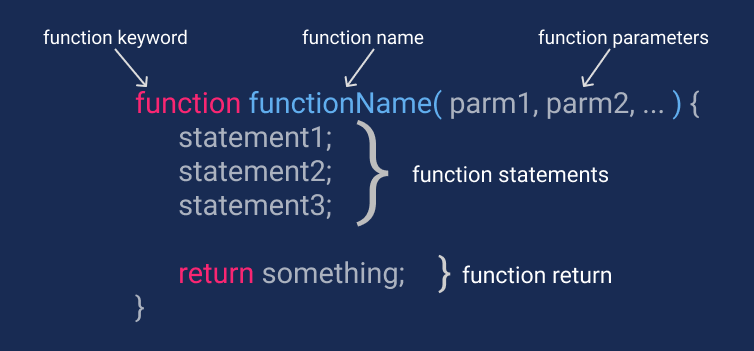A programming language is said to have First-class functions when functions in that language are treated like any other variable. For example, in such a language, a function can be passed as an argument to other functions, can be returned by another function and can be assigned as a value to a variable.
Example | Assign a function to a variable
JavaScript
const foo = function() {
console.log("foobar");
}
foo(); // Invoke it using the variable
// foobar
Copy to Clipboard
We assigned an Anonymous Function in a Variable, then we used that variable to invoke the function by adding parentheses () at the end.
Note: Even if your function was named, you can use the variable name to invoke it. Naming it will be helpful when debugging your code. But it won’t affect the way we invoke it.
Example | Pass a function as an Argument
JavaScript
function sayHello() {
return "Hello, ";
}
function greeting(helloMessage, name) {
console.log(helloMessage() + name);
}
// Pass `sayHello` as an argument to `greeting` function
greeting(sayHello, "JavaScript!");
// Hello, JavaScript!
Copy to Clipboard
We are passing our sayHello() function as an argument to the greeting() function, this explains how we are treating the function as a value.
Note: The function that we pass as an argument to another function, is called a Callback function. sayHello is a Callback function.
Example | Return a function
JavaScript
function sayHello() {
return function() {
console.log("Hello!");
}
}
Copy to Clipboard
In this example; We need to return a function from another function – We can return a function because we treated function in JavaScript as a value.
Note: A function that returns a function is called a Higher-Order Function.
Back to our example; Now, we need to invoke sayHello function and its returned Anonymous Function. To do so, we have two ways:
1- Using a variable
const sayHello = function() {
return function() {
console.log("Hello!");
}
}
const myFunc = sayHello();
myFunc();
// Hello!
Copy to Clipboard
This way, it returns the Hello! message.
Note: You have to use another variable. If you invoked sayHello directly, it would return the function itself without invoking its returned function.
2- Using double parentheses
function sayHello() {
return function() {
console.log("Hello!");
}
}
sayHello()();
// Hello!
Copy to ClipboardWe are using double parentheses ()() to invoke the returned function as well.
